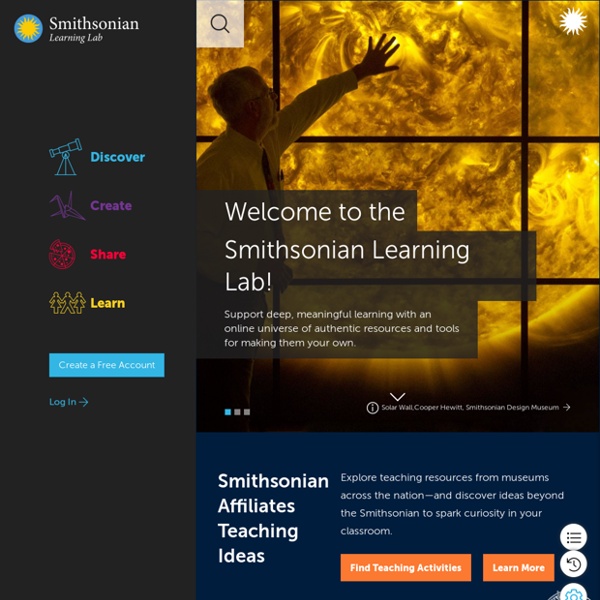



The Fabulous Field Trip Guide: Mobile Learning and QR Codes “You have brains in your head. You have feet in your shoes. You can steer yourself any direction you choose.”- Dr. Seuss, Oh, The Places You’ll Go! In 2012, I visited the British Library with Terry Freedman. Where to Find Good Educational Videos There’s a right and a wrong way to use videos in the classroom. Not all videos are primed for instructional use, and not all instruction lends itself to video. However, pairing a great video with the tools students need to engage with it can lead to a deeper understanding of or alternate perspective on what’s being taught. Check out the September Education Update article “Showing Videos in the Classroom: What’s the Purpose?” to learn three criteria for selecting an effective video and find tips for helping your students “make the shift from vegging out to tuning in for learning.”
The Best Ways to Use Padlet - Examples from Teachers This afternoon at the ISTE 2016 conference I had a nice meeting with Melanie Broder from Padlet. She told me about some of the things that Padlet is working on developing during the rest of the year. One of things is a community for educators. Images-of-change Glacier National Park, in Montana’s portion of the Rocky Mountains, is expected to be virtually glacier-free by around 2030. The roughly 150 glaciers it contained in 1850 dwindled to 83 by 1968 and to 25 today. The area shown here is the central portion of the park. Most of the blue bodies in these false-color images are permanent snow and ice. Teaching the Emoji Generation: 12+ Activities & Resources “Although an emoticon may look like a smile, a frown or any number of facial expressions, it doesn’t represent a face, as many internet users assume. It’s actually intended to convey a feeling (“I’m happy,” or “just joking”).” – Lauren Collister Our students humanize their digital experience with text speak, emoji, and selfies.
PowerMyLearning Connect Collaborate with teachers in your school Engage families in the learning process Mix and match educator-curated activities Design your own flexible playlists Provide targeted professional development Ignite student curiosity For Students 2016 2b Students engage in positive, safe, legal and ethical behavior when using technology, including social interactions online or when using networked devices. Positive behaviors Interactions that convey a portrait of the way you want to be perceived and healthy interactions with technology itself, for example, moderating the time online or gaming, ergonomic issues and balancing use of media with daily physical activity. Safe behaviors Interactions that keep you out of harm’s way, for example, knowing the identity of who you are interacting with; how much and what kind information you release online; protecting oneself from scams, phishing schemes and poor purchasing practices (e-commerce theft).
Kidcasts: Podcasts for kiddos Last week I enjoyed the great variety of edCamp Global sessions across a variety of platforms–Periscope, Twitter chats, and Google+ Hangouts. One session that continues to resonate with me is the Hangout on Kidcasts, or podcasts for kids. I suppose it’s because I was largely unaware that kidscasts were a thing, a potentially important thing. The session got me wondering why so few of us seem to be gathering podcasts as resources for teachers and parents and our libraries. Why aren’t we presenting and curating podcasts series for kids to discover? Hosted by Joe Rodriguez (@edtechjoe), 5th Grade teacher at The Ambassador School of Global Education in Los Angeles, the edcamp Global Kidcasts session featured Lindsey Patterson (@TumbleCast), co-host of the Tumble Science Podcasts for Kids and Kitty Felde, host and executive producer of Book Club for Kids.
Design Thinking: Synthesis 1 If your students have been deep immersing themselves in conflicting, complex ideas for some time, there will come a point when it's essential to make sense of things. One effective tool for beginning to synthesise ideas is Hexagonal Thinking. The Why In Design Thinking, and in other deep stretches of thinking, we can all get muddled by the complexity of the ideas before us. It is a difficult mental task to work out what connects to what, which ideas are more outliers on their own, and which concepts tie to the core of the challenge we're exploring.
Data repositories - Open Access Directory From Open Access Directory This list is part of the Open Access Directory. This is a list of repositories and databases for open data. Please annotate the entries to indicate the hosting organization, scope, licensing, and usage restrictions (if any).